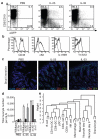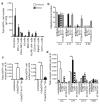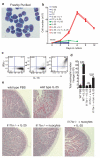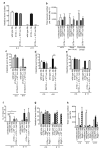Nuocytes represent a new innate effector leukocyte that mediates type-2 immunity
- PMID: 20200518
- PMCID: PMC2862165
- DOI: 10.1038/nature08900
Nuocytes represent a new innate effector leukocyte that mediates type-2 immunity
Abstract
Innate immunity provides the first line of defence against invading pathogens and provides important cues for the development of adaptive immunity. Type-2 immunity-responsible for protective immune responses to helminth parasites and the underlying cause of the pathogenesis of allergic asthma-consists of responses dominated by the cardinal type-2 cytokines interleukin (IL)4, IL5 and IL13 (ref. 5). T cells are an important source of these cytokines in adaptive immune responses, but the innate cell sources remain to be comprehensively determined. Here, through the use of novel Il13-eGFP reporter mice, we present the identification and functional characterization of a new innate type-2 immune effector leukocyte that we have named the nuocyte. Nuocytes expand in vivo in response to the type-2-inducing cytokines IL25 and IL33, and represent the predominant early source of IL13 during helminth infection with Nippostrongylus brasiliensis. In the combined absence of IL25 and IL33 signalling, nuocytes fail to expand, resulting in a severe defect in worm expulsion that is rescued by the adoptive transfer of in vitro cultured wild-type, but not IL13-deficient, nuocytes. Thus, nuocytes represent a critically important innate effector cell in type-2 immunity.
Figures




Comment in
-
Immunology: Close encounters of the second type.Nature. 2010 Apr 29;464(7293):1285-6. doi: 10.1038/4641285a. Nature. 2010. PMID: 20428154 No abstract available.
References
-
- Holgate ST, Polosa R. Treatment strategies for allergy and asthma. Nat Rev Immunol. 2008;8:218–230. - PubMed
-
- Larche M, Robinson DS, Kay AB. The role of T lymphocytes in the pathogenesis of asthma. J Allergy Clin Immunol. 2003;111:450–63. quiz 464. - PubMed
-
- Fallon PG, et al. IL-4 induces characteristic Th2 responses even in the combined absence of IL-5, IL-9, and IL-13. Immunity. 2002;17:7–17. - PubMed
Publication types
MeSH terms
Substances
Grants and funding
LinkOut - more resources
Full Text Sources
Other Literature Sources
Molecular Biology Databases

